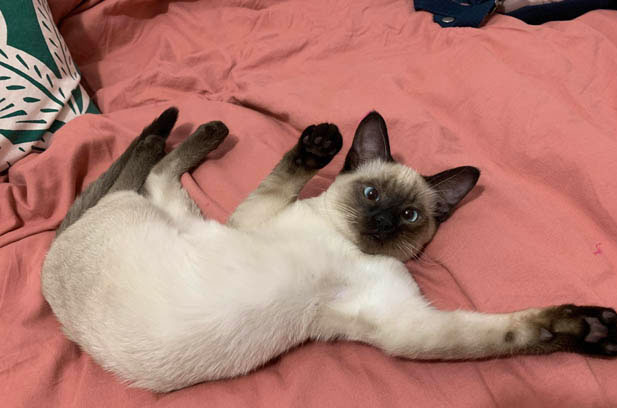Siamese cats are renowned for their unique and ever – changing fur colors, which have fascinated cat lovers around the world. However, not all Siamese cats darken in the same way. The final hue of their fur largely depends on their specific color point variety. Among them, the seal point Siamese is particularly well – known for its tendency to grow darker over time, especially in colder winter months, while other color variations exhibit different patterns of color development as they mature.
Seal point Siamese cats experience a significant darkening process. As the temperature drops, their fur color deepens rapidly, with the extremities such as the face, ears, paws, and tail becoming almost black. This dramatic transformation is a result of their genetic makeup, which makes them highly sensitive to temperature changes. In contrast, other color point varieties like blue point, red point, and chocolate point have their own distinct color characteristics. Blue point Siamese have a grayish – blue hue on their faces, red point ones showcase a warm orange – toned color, and chocolate point Siamese display a rich brown shade.

My personal experience with my chocolate tortoiseshell Siamese cat has been a testament to the diversity within the breed. When I first laid eyes on her, she was a tiny ball of fluff, resembling a white kitten more than a typical Siamese. With a brown nose and almost pure – white fur, she was an adorable sight at just two months old, as evidenced by the photo the breeder sent me when she was still with her mother. Her fluffy, slightly tousled coat only added to her charm.
When she came to my home at a little over two months, her clingy nature immediately became apparent. She would insist on staying close to me, often perching on my body, and her predominantly white fur led many of my friends to mistake her for a different breed. As she grew, subtle changes began to occur. By three months and five months, the tips of her nose and tail started to darken, though her body remained predominantly white, creating a striking contrast.
One question I frequently encountered when sharing her photos on social media was, “Is this really a Siamese cat? Why hasn’t it turned black?” This curiosity highlights the common misconception that all Siamese cats darken significantly. In fact, as long as the Siamese cat isn’t of the seal point variety, it’s unlikely to become completely black.
When my little girl reached eight months, I decided to have her spayed. Shortly after, she experienced her first winter in the north. I was filled with anxiety, fearing that the cold weather would cause her fur to darken dramatically. Despite having heating at home, the temperature wasn’t particularly high. To my relief, while her fur did deepen in color, it didn’t turn completely dark. Every day when I returned home, I was greeted by her eight – pound body sprawling on my shoulders, demanding to be held. If I didn’t comply, she would let out plaintive meows.
Now, at two and a half years old, my chocolate tortoiseshell Siamese has undergone further changes. Her face and paws have darkened considerably, and her back and legs have taken on a brownish tint. However, the fur on her neck and belly remains strikingly white. She still retains her irresistible charm, a delightful blend of unique coloration and an affectionate personality.
In conclusion, the world of Siamese cats is a colorful and diverse one. While the seal point variety may darken significantly, other color point Siamese offer a range of beautiful and stable fur colors. Each Siamese cat, with its own distinct appearance and character, brings a unique charm to the lives of their owners, making them truly special companions.
Leave a Reply